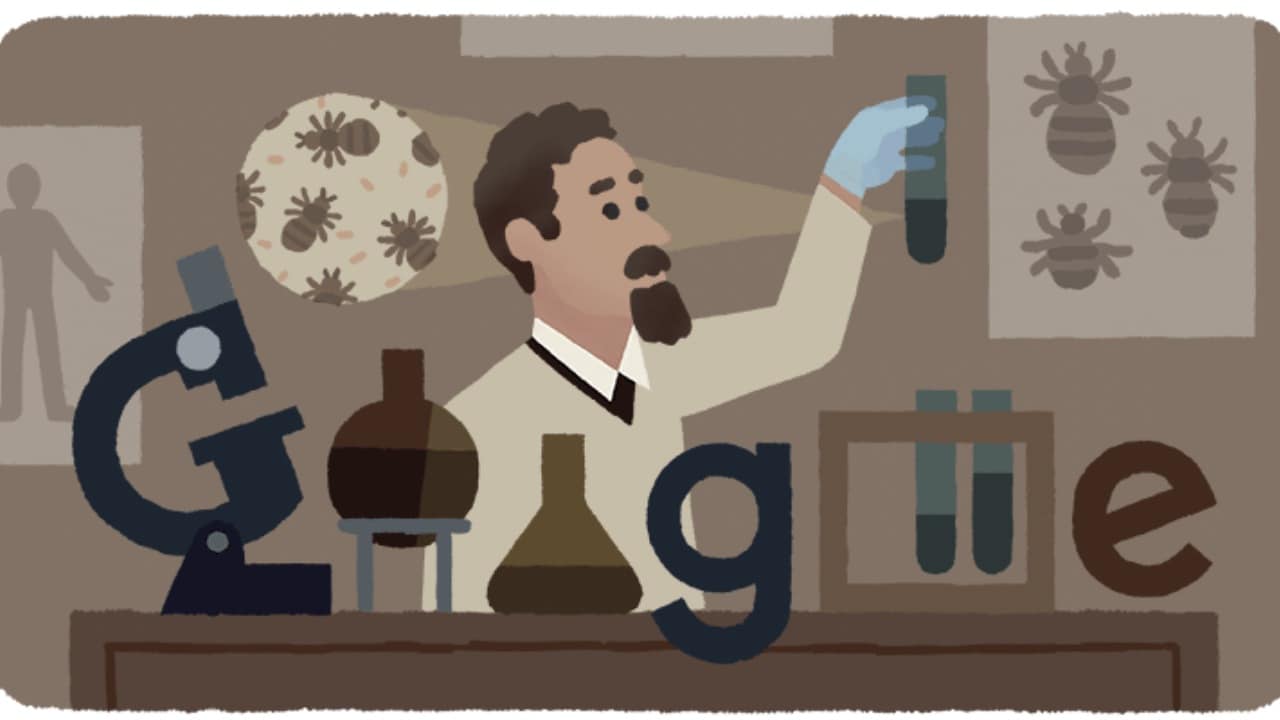tech2 News StaffSep 02, 2021 11:06:17 IST
Today, Google Doodle is celebrating the 138th birth anniversary of Polish inventor, doctor, and immunologist Rudolf Weigl.
He is known as the creator of the first effective vaccine against epidemic typhus.
There are three types of Typhus fevers – scrub typhus, murine typhus, and epidemic typhus. It is a group of diseases caused by bacteria spread fleas, lice, and chiggers.

Google Doodle
Each insect spreads a type of typhus fever – Chiggers spread scrub typhus, fleas spread murine typhus, and body lice spread epidemic typhus.
According to the US CDC, epidemic typhus was the cause of death for millions of people in previous centuries, but it very uncommon now. When cases do occur, it is seen in areas with extreme overcrowding and where body lice can travel from one person to another, easily.
Born in 1883, Weigl was born in born in the modern-day Czech Republic to Austrian-German parents. His father died in a bicycle accident and his mother, re-married a Polish secondary-school teacher.
He graduated from Poland’s Lwów University with a degree in biological sciences in 1907 and then got his doctoral degrees in zoology, comparative anatomy and histology.
Typhus was a big concern during World War 1 and Weigl studied lice in his lab for decades and was able to develop a vaccine from these tiny insects.
After the preliminary work done by Charles Nicolle in 1909 (he discovered lice were the vector of epidemic typhus), Weigl began working on an epidemic Typhus vaccine.
To develop the vaccine he bred lice infected with Rickettsia prowazeki and then crushed them into a vaccine paste. He used this paste to experiment on animals and conducted some human experiments as well.
In 1936, Weigl was successfully and inoculated his first beneficiary.
During Soviet occupation, he was the head of the Department of General Biology at Lviv University and was working on developing this vaccine. The Typhus Research Institute was created in his department. He retained his position during the occupation because his research was particularly important as the epidemic typhus was spreading mainly in Eastern Europe.
Weigl was forced to open a vaccine production plant and mass-produce the vaccine. Typhus was believed to be a characteristic of “parasitic Inhumans” and in Nazi propaganda Jews were often portrayed as carriers of the disease, according to a blog by the Lviv Centre.
During his tenure, after he realised the weight of the employee identification card of his Institute, he began to employ people who were at risk from the Gestapo.
It is estimated that 5,000 people were saved by Weigl, both by his vaccine and due to his protection from the Gestapo.
He died at the age of 75 in 1957 and was nominated twice for the Nobel Prize for his invention of the vaccine. But they were blocked due to the war and politics, report Cnet.










